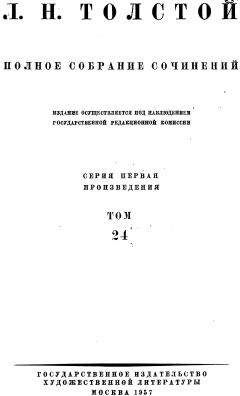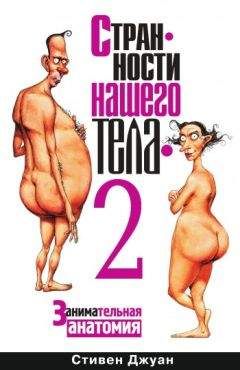И наконец, благодарю многочисленных читателей моих книг и всех, кто посылал мне вопросы, ответы на которые были уже даны ранее. Особенно благодарю юных читателей за вопросы, присланные по электронной почте.
Любознательность – великая сила!
Доктор Стивен Джуан
Доктор Стивен Джуан – автор книг, повествующих о различных «странностях», в том числе таких, как «Странности нашего тела» (1995), «Странности нашего мозга» (1998), «Странности нашего тела-2» (2000), «Странности нашего секса» (2001) и «Странности нашего тела-3» (2007). Это его двенадцатая по счёту книга.
Учёный, преподаватель и журналист, антрополог по образованию, доктор Стивен Джуан – один из лучших популяризаторов науки в мире. Его книги переведены на 27 языков. Ему привелось поработать редактором в журнале и автором колонок в таких периодических изданиях, как Sydney Morning Herald, Sun Herald (Сидней), National Post (Торонто), The New York Daily News и The Register (Лодон). Живой и яркий оратор, он регулярно появляется в новостях и других телевизионных программах и радиопередачах, раскрывая тайны человеческого существа. Более тридцати лет он преподавал на факультете просвещения и социальной работы Сиднейского университета. В 2009 году он вышел в отставку, но остаётся членом общества Эшли Монтэгю, популяризирующего науку о человеке среди широкой публики.
C. Ray, ‘How is paternity determined and with what degree of accuracy?’, New York Times, 9 December 1986, p. B4.
C. Sutton, How Did They Do That?, Quill, New York, 1985, pp. 91–94.
E. Main, D. Moore, B. Farrell, L. Schimmel, R. Altman, C. Abrahams, M. Bliss, L. Polivv and J. Sterling, ‘Is there a useful cesarean birth measure? Assessment of the nulliparous term singleton vertex cesarean birth rate as a tool for obstetric quality improvement’, American Journal of Obstetrics and Gynecology, 2006, vol. 194, no. 6, pp. 1644–1651.
W. Burket, Creation of the Sacred: Tracks of Biology in Early Religions, Harvard University Press, Cambridge, Massachusetts, 1996.
A. Mohl, ‘Growing up male: Is violence, crime and war endemic to the male gender?’, Journal of Psychohistory, 2006, vol. 33, no. 3, pp. 270–289.
S. Juan, ‘Defi ning race’, National Post, 10 April 2006, p. 1.
D. Jones, ‘The Neanderthal code?’, New Scientist, 11 November 2006, pp. 44–47.
S. Guynup, ‘Resurrecting extinct animals?’, Popular Science, February 2006, pp. 54–55.
S. Juan, ‘Bringing back the extinct’, National Post, 1 May 2006, p. 1.
S. Juan, ‘What is the diff erence between a chromosome and a gene?’, The Register, 19 May 2006.
S. Juan, ‘What are chromosome abnormalities and how often do they occur?’, The Register, 19 May 2006.
Dr Michael De Bellis is from the University of Pittsburgh Medical Centre.
L. Thomas and M. De Bellis, ‘Pituitary volumes in pediatric maltreatment-related posttraumatic stress disorder’, Biological Psychiatry, 2004, vol. 55, no. 7, pp. 752–758.
Dr Martin Teicher is from the Developmental Biopsychiatry Research Program at McLean Hospital, Harvard University.
M. Teicher, N. Dumont, Y. Ito, C. Vaituzis, J. Giedd and S. Andersen, ‘Childhood neglect is associated with reduced corpus callosum area’, Biological Psychiatry, 2004, vol. 56, no. 2, pp. 80–85.
Dr Margot Sunderland is the Director of Education and Training at the Centre for Child Mental Health in London.
S. Juan, ‘Can leaving a baby to “cry it out” cause brain damage?’, The Register, 14 July 2006.
S. Juan, ‘Can leaving my baby to “cry it out” cause brain damage?’, National Post, 30 October 2006, p. 1.
Anni Gethin is a health social scientist in Sydney and Beth Macgregor is a psychologist in Sydney.
A. Gethin and B. Macgregor, Helping Your Baby to Sleep, Finch Publishing, Sydney, 2007, p. 51.
Dr Jeff ry Simpson is from the Institute of Child Development at the University of Minnesota in Minneapolis.
J. Simpson, W. Collins, S. Tran and K. Haydon, Attachment and the experience and expression of emotions in romantic relationships: A developmental perspective’, Journal of Personality and Social Psychology, 2007, vol. 92, no. 2, pp. 355–367.
C. Ray, ‘What is amniotic fl uid?’, New York Times, 12 January 1999, p. D3.
S. Juan, ‘What is amniotic fl uid?’, The Register, 18 August 2006.
S. Juan, ‘Great moments in human research’, The Register, 27 January 2007.
S.Juan, ‘Great moments in human research’, The Register, 3 February 2007.
Drs Anthony DeCasper and Melanie Spence are from the University of North Carolina at Greensboro.
A. DeCasper and M. Spence, ‘Prenatal maternal speech infl uences newborns’ perception of speech sounds’, Infant Behaviour and Development, 1986, vol. 9, no. 2, pp. 133–250.
D. Chamberlain, The Mind of Your Newborn Baby, North Atlantic Books, Berkeley, 1998, pp. 37–38.
S. Juan, ‘Why can’t I remember my own birth?’, The Register, 8 September 2006.
Drs K.Y. Loh and N. Sivalingam are from the International Medical University in Kuala Lumpur, Malaysia.
K. Loh and N. Sivalingam, ‘Understanding hyperemesis gravidarum’, Medical Journal of Malaysia, 2005, vol. 60, no. 3, pp. 394–399.
Drs J.D. Quinla and D.A. Hill are from the naval hospital in Jacksonville, Florida.
J. Quinla and D. Hill, ‘Nausea and vomiting of pregnancy’, American Family Physician, 2003, vol. 68, no. 1, pp. 121–128.
Drs Gillian Pepper and S. Craig Roberts are from the School of Biological Sciences at the University of Liverpool.
G. Pepper and S. Roberts, ‘Rates of nausea and vomiting in pregnancy and dietary characteristics across populations’, Proceedings of the Royal Society, Biological Sciences, 2006, vol. 273 (1601), pp. 2675–2679.
Dr C. Paquin is a biologist at the University of Laval in Quebec, Canada, and Dr J. Adams is a biologist at the University of Michigan in Ann Arbor.
C. Paquin and J. Adams, ‘Frequency of fi xation of adaptive mutations is higher in evolving diploid than haploid yeast populations’, Nature, 1983, vol. 302 (5908), pp. 495–500.
C. Paquin and J. Adams, ‘Relative fi tness can decrease in evolving asexual populations of S. cerevisiae’, Nature, 1983, vol. 306 (5941), pp. 368–370.
S. Juan, “Why does natural selection take so long to get results?’, The Register, 15 September 2006.
Dr Ralph Catalano is a professor of public health at the University of California at Berkeley.
R. Catalano, ‘Sex ratios in the two Germanies: A test of the economic stress hypothesis’, Human Reproduction, 2003, vol. 18, no. 9, pp. 1972–1975.
R. Catalano, T. Bruckner, A. Marks and B. Eskenazi, ‘Exogenous shocks to the human sex ratio: The case of September 11, 2001 in New York City’, Human Reproduction, 2006, vol. 21, no. 12, pp. 3127–3131, Epub 26 August 2006.
R. Catalano and T. Bruckner, ‘Male lifespan and the secondary sex ratio’, American Journal of Human Reproduction, 2006, vol. 18, no. 6, pp. 783–790, Epub 12 October 2006.
‘Fewer boys are born during hard times’, New Scientist, 30 August 2006, p. 20.
S. Juan, ‘Is it true that fewer boy babies are born in hard times?’, The Register, 3 November 2006.
S. Juan, ‘What is Cro-Magnon man?’, The Register, 10 November 2006.
Dr Jimmy Or is from the Takanishi Laboratory Humanoid Robotics Institute of Waseda University in Tokyo.
J. Or, A control system for a fl exible spine belly-dancing humanoid’, Artifi cial Life, 2006, vol. 12, pp. 63–87.
S. Juan, ‘Meet the belly dancing robot’, National Post, 8 January 2007, pp. 1–2.
Drs M. Hirose and K. Ogawa are from Honda Research and Development Company Ltd of the Wako Research Centre in Saitama, Japan.
M. Hirose and K. Ogawa, ‘Honda humanoid robots development’, Philosophical Transactions of the Royal Society A: Mathematical, Physical and Engineering Sciences, 2007, vol. 365 (1850), pp. 11–19.
Drs A. Arita, K. Hiraki, T. Kanda and H. Ishiguro are from the Department of General Systems Studies at the University of Tokyo.
A. Arita et al., ‘Can we talk to robots? Ten-month-old infants expected interactive humanoid robots to be talked to by persons’, Cognition, 2005, vol. 95, vol. 3, pp. 849–857.
Hiroshi Ishiguro is from the ATR Intelligent Robotics and Communication Laboratories, near Kyoto, Japan.
B. Schaub, ‘My android twin’, New Scientist, 14 October 2006, pp. 42–46.
C. Biever, ‘A good robot has personality but not looks’, New Scientist, 22 July 2006, p. 32.
Drs K. Nishiwaki, J. Kuff ner, S. Kagami, M. Inaba and H. Inoue are from the Digital Human Research Centre of the National Institute of Advanced Industrial Science and Technology of Tokyo.
K. Nishiwaki et al., ‘The experimental humanoid robot H7: A research platform for autonomous behaviour’, Philosophical Transactions of the Royal Society A: Mathematical, Physical and Engineering Sciences, 2007, vol. 365 (1850), pp. 79—107.
Dr Alain Cardon is from the Laboratory of Information of Paris.
A. Cardon, Artifi cial consciousness, artifi cial emotions, and autonomous robots’, Cognitive Processes, 2006, vol. 7, no. 4, pp. 245–267.
R. Kurzweil, ‘Robots R Us’, Popular Science, September 2006, pp. 52–71.
S. Juan, ‘Will robots ever become just like humans?’, The Register, 23 December 2006.
S. Juan, ‘How old is my body if the cells keep renewing themselves?’, The Register, 17 February 2007.
Dr Michael Onken is from the Department of Ophthalmology and Visual Sciences at Washington University in St Louis.
Personal communication, 2 February 2006.
Dr Barbara Sakakian is from the Department of Psychiatry at the School of Clinical Medicine of Cambridge University.
Personal communication, 7 February 2006.
Dr Aubrey de Grey is from the Interdisciplinary Research Centre on Aging at Cambridge University.
G. Lawton, ‘The incredibles’, New Scientist, 15 May 2006, pp. 32–38.
S. Juan, ‘Is the human skull made up of one bone or two?’, The Register, 20 January 2007.
Drs A. Czaplinski, A. Steck and P. Fuhr are from the Neurology Clinic of the University of Bazylei in Szwajacaria, Poland.




